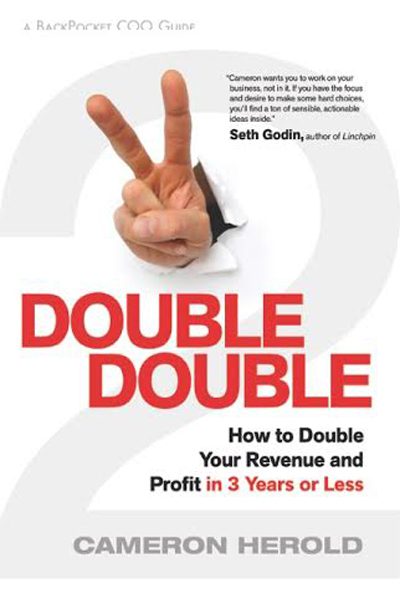
 Ask most employees of any company, and they’ll agree: Nothing ruins a business day more than having a schedule full of meetings.
Ask most employees of any company, and they’ll agree: Nothing ruins a business day more than having a schedule full of meetings.
But Cameron Herold, a business development expert and author of “Double Double: How to Double Your Revenue and Profit in 3 Years or Less,” says it doesn’t need to be that way.
“Meetings aren’t terrible,” Herold says. “We’re just terrible at running meetings.”
He says businesses can make better use of the time spent in meetings, and improve employee morale and productivity in the process, if they follow five simple steps.
• Have an agenda. Meetings that don’t have a clear agenda tend to get off track easily. They also often include people who don’t need to be there and would be better off back at their desks, completing important projects, Herold says. The agenda can be short, but should include the main purpose of the meeting, the possible outcomes and the action items to be covered.
• Determine a meeting style. There are basically three styles of meetings: information share, creative discussion and consensus decision. In an information-share meeting, the information flows in one direction. Either employees tell the leadership something, or senior management has something to say to employees.
 • Start on time and end early. If you scheduled the meeting for 10 a.m., start at 10 a.m. “This shows respect for people’s times, and also reflects something much bigger,” Herold says. “If you can’t start a meeting on time, why would it be any different for anything else that’s going on in a company?” End the meeting five minutes early. That gives people time to grab a cup of coffee, check emails, go to the restroom or chat with colleagues before their next meeting.
• Start on time and end early. If you scheduled the meeting for 10 a.m., start at 10 a.m. “This shows respect for people’s times, and also reflects something much bigger,” Herold says. “If you can’t start a meeting on time, why would it be any different for anything else that’s going on in a company?” End the meeting five minutes early. That gives people time to grab a cup of coffee, check emails, go to the restroom or chat with colleagues before their next meeting.
• Foster useful communication. Some people talk a lot in every meeting. Others rarely speak. For a meeting to be successful, you need to get everyone engaged, Herold says. Foster dialogue with newcomers or quiet people first, and then go around the table, moving up in seniority as you solicit feedback or ideas. Also, make sure people are not distracted because they are responding to email on their cell phones or laptops.
• Know your role. Every meeting should have a chair, a timekeeper, participants and a closer. The chair announces the type of meeting it is and makes sure everyone sticks with the agenda. “The job of the chair is to prevent the meeting from going sideways,” Herold says. The timekeeper does what the name implies, making sure everyone stays on schedule and that no one lingers too long on any one point. The participants should not be passive observers. They need to arrive prepared to contribute and to remain interested throughout the meeting. The closer generally is going to be the chair. Herold says meetings should always end with the chair posing the question: “Who’s doing what, and by when.” That way each person acknowledges their assignment and their deadline for achieving it.




